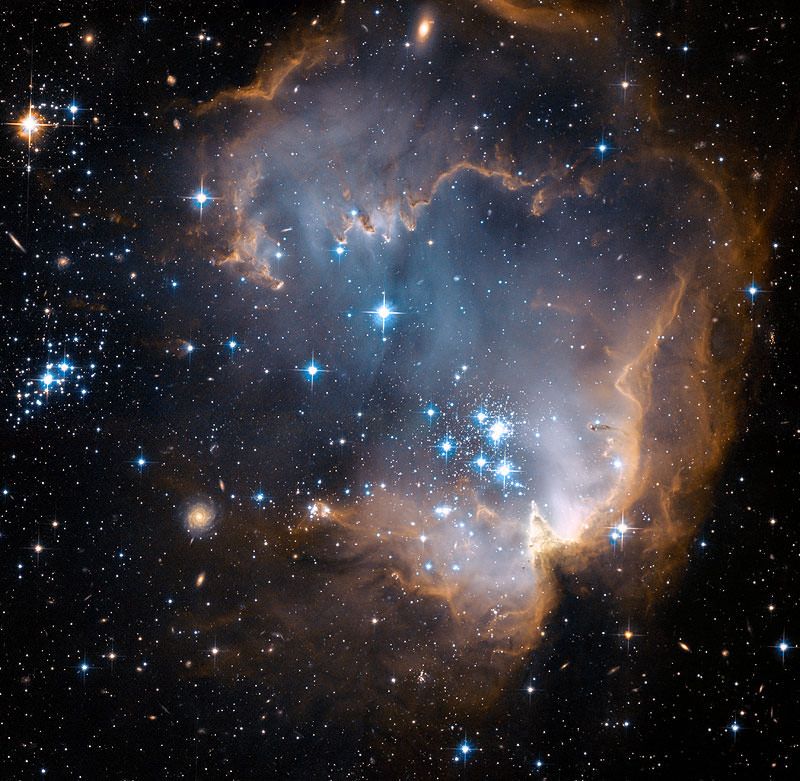

Hubble Observes Infant Stars in Nearby Galaxy
Here are some beautiful galaxy pics. You can even use these as desktop background wallpapers if you like. Just click on an image to see a larger version and then right-click and choose “Set as Desktop Background”.
[/caption]
This is a picture of a cluster of stars in the nearby satellite galaxy, the Small Magellanic Cloud. These bright young stars are blasting out a bubble of gas and dust with their powerful stellar winds.
This is a Hubble Space Telescope image of the nearby galaxy Centaurus A. The supermassive black hole at the heart of Centaurus A is currently feeding on a smaller galaxy that recently collided. Cosmic collisions like this were common in the early Universe, but they happen less frequently now with more space in between galaxies.
This is a photograph of the galaxy NGC 4526, captured by the Hubble Space Telescope. You can also see a bright star below the galaxy; it’s not a star at all, but a supernova that was imaged as part of this photograph.
This is an image of the galaxy cluster MACS J0717 captured by NASA’s Chandra X-Ray Observatory. The image from Chandra lets astronomers see where large clouds of hot gas are colliding together, heating up to millions of degrees.
This is an artist’s impression of what a galaxy might have looked like in the early Universe, just a billion years after the Big Bang. Stars formed out of the primordial hydrogen left over from the Big Bang, grew large and then detonated as supernovae, seeding the Universe with heavier elements.
We’ve written many articles about galaxies for Universe Today. Here is a story about how many galaxies there are in the Universe, and here is an article about how many galaxies we have discovered.
If you’d like more info on galaxies, check out Hubblesite’s News Releases on Galaxies, and here’s NASA’s Science Page on Galaxies.
We’ve also recorded an episode of Astronomy Cast about galaxies. Listen here, Episode 97: Galaxies.
In 2015, the United Nations adopted the 2030 Agenda for Sustainable Development—the Sustainable Development Goals…
Astronomers have been battling threats to their clear skies on all fronts lately. One of…
If you were Captain of the first USS Enterprise, where would you go!? Humanity is…
Now is the best time to observe Mars in 2025. Mars from 2014. Credit: Paul…
Scheduled for launch in 2027, the Nancy Grace Roman Telescope is slowly being readied for…
Few places in the solar system are better suited to a balloon than Titan. The…